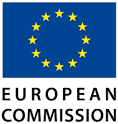European Union (EU) member-states have confirmed the exchange of information in 2017 on nearly 9 million financial accounts with a total balance of almost €3 trillion
A report published by the European commission on the exchange of information on Monday indicated that EU transparency rules led to member-states to compile and share data from 8.7 million financial accounts with a total value of €2,900 billion in 2017.
Similarly, between 2015 and 2017 member-states shared information on over €120 million in income and capital belonging to nearly 16 million taxpayers resident in one country but receiving income from another.
The report, sourced from europa.eu also showed that some countries had been able to use this data to increase their tax base due to a new awareness of potentially taxable foreign income and capital of their tax residents.
The first rules governing the automatic exchange of tax information came into force in 2015 with member-states being obliged to inform each other of the financial account information of individuals who are tax resident in another member state.
From 2017, EU member-states also began to provide each other automatically with information on financial accounts held by private individuals and certain entities. The system was given another boost in 2017 when member-states began exchanging information on certain tax rulings and pricing arrangements with multinational companies.
Already, the commission reported that 18,000 such rulings had already been shared, compared with about 100 such rulings in 2015, while a lot of work remains to make sure information exchanged is of the highest quality possible and put to full use.
In particular, it stated that member-states would have to improve the way they collect and exploit the data they exchange just as work should also continue on assessing the full benefits of exchange of information.
Consequently, the Commission has begun work on evaluating the current toolbox to see how it can be improved.






